Deadly Nightshade Belladonna: Grow & Care for Atropa belladonna
Written by Iris
Aug 16 2021
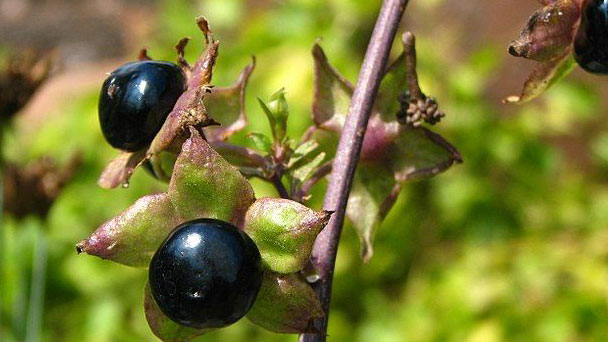
Belladonna (Atropa belladonna), native to Central and Southern Europe, is a bushy perennial plant and grows to a height of two metres and occasionally more. The Belladonna (Atropa belladonna) pale green oval leaves are pointed and strongly ribbed, and the bell-like purple-brown flowers with five fused petals, 20 to 30mm long, produce shiny green berries that turn black when fully ripe.
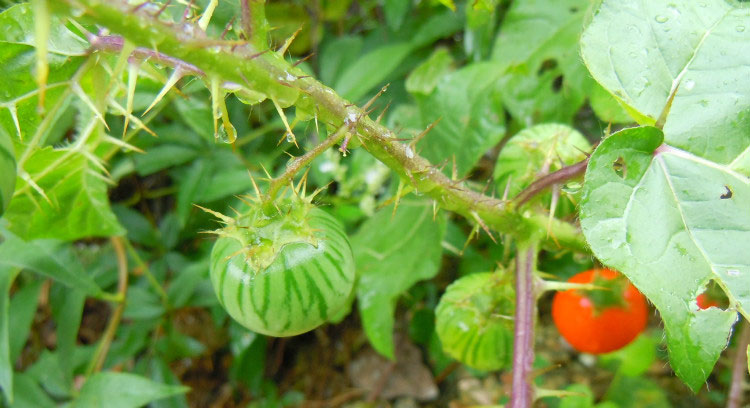
To do so, start by examining how large of a presence the plant has on your property. Smaller groupings of belladonna plants can be easily dug out and removed, as long as you're careful to get all parts of the root so the belladonna doesn't come back. You can also try eradicating the belladonna in your yard using a herbicide. However, this option is best reserved for larger populations of the plant, as chemical treatment is likely to kill any plants surrounding the treated area as well.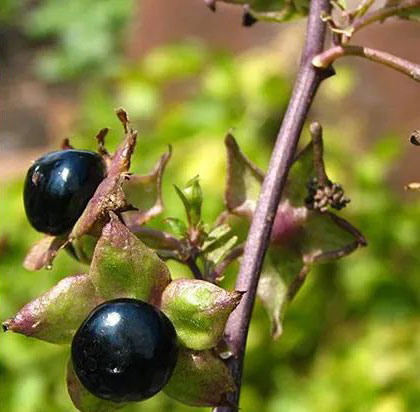
Although it is poisonous, deadly nightshade has a long history of medicinal use and has a wide range of applications, in particular, it is used to dilate the pupils in eye operations, to relieve intestinal colic, and to treat peptic ulcers. The plant can be used to treat the symptoms of Parkinson's disease, reducing tremors and rigidity whilst improving speech and mobility. It has also been used as an antidote in cases of mushroom or toadstool poisoning. This is a very poisonous plant, it should be used with extreme caution and only under the supervision of a qualified practitioner. See also the notes above on toxicity. All parts of the plant are analgesic, antidote, antispasmodic, diuretic, hallucinogenic, mydriatic, narcotic and sedative.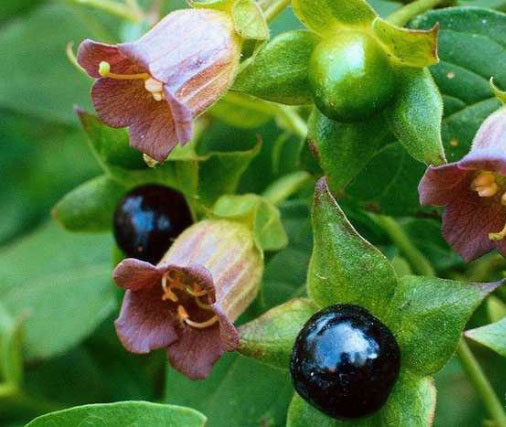
Identifying BelladonnaBelladonna (Atropa belladonna) ToxicityHow to prevent Belladonna (Atropa belladonna)Medicinal UsesHow to Grow Belladonna (Atropa belladonna)How to Care for Belladonna (Atropa belladonna)
Identifying Belladonna
Belladonna is an upright, branched perennial that's part of the nightshade family. The plant's dark green leaves are oval, pointed, and unevenly sized, ranging from 3 to 10 inches in length. The dull, purple-hued flowers are distinctly bell-shaped and mildly fragrant. The fruit, which ripens between late August and early September, is black and shiny like a cherry. Belladonna spreads rapidly like a weed and dies back during the winter. In the spring, it will regrow from its thick, fleshy roots.
Belladonna (Atropa belladonna) Toxicity
Highly toxic - all parts, particularly the roots and ripe fruit, are most likely fatal if ingested. Use extreme caution if planted where children frequent as the fruit is attractive and has a sweet taste. Although this plant is commercially grown for production of medical products, it is poisonous in all of its parts to humans and should never be planted in home landscapes. Arguably it should only be grown in controlled situations for commercial drug production, research, or teaching.How to prevent Belladonna (Atropa belladonna)
If you have positively identified belladonna in your yard, take any precautions necessary to avoid skin, oral, or eye contact, including suiting up, wearing gloves, and using protective eyewear. Only then can you safely remove the plant.To do so, start by examining how large of a presence the plant has on your property. Smaller groupings of belladonna plants can be easily dug out and removed, as long as you're careful to get all parts of the root so the belladonna doesn't come back. You can also try eradicating the belladonna in your yard using a herbicide. However, this option is best reserved for larger populations of the plant, as chemical treatment is likely to kill any plants surrounding the treated area as well.

Medicinal Uses
Rayagarden can not take any responsibility for any adverse effects from the use of plants. Always seek advice from a professional before using a plant medicinally.Although it is poisonous, deadly nightshade has a long history of medicinal use and has a wide range of applications, in particular, it is used to dilate the pupils in eye operations, to relieve intestinal colic, and to treat peptic ulcers. The plant can be used to treat the symptoms of Parkinson's disease, reducing tremors and rigidity whilst improving speech and mobility. It has also been used as an antidote in cases of mushroom or toadstool poisoning. This is a very poisonous plant, it should be used with extreme caution and only under the supervision of a qualified practitioner. See also the notes above on toxicity. All parts of the plant are analgesic, antidote, antispasmodic, diuretic, hallucinogenic, mydriatic, narcotic and sedative.
How to Grow Belladonna (Atropa belladonna)
Steps for Belladonna (Atropa belladonna) Propagation with Seeds
Belladonna (Atropa belladonna) seeds are very likely to be dormant and may not germinate without a pre-germination treatment. The exact dormancy mechanism is not clear, so several methods have been proposed to break seed dormancy.Pre-Germination Treatment Choices
- Gibberellic Acid. Seeds are soaked in a 100-200 ppm gibberellic acid (GA3) solution for 3-4 hours. Gibberllic acid is a natural plant hormone. It is available from horticultural and scientific supply houses.
- Seeds are soaked in concentrated sulphuric acid for 2-3 minutes, then rinsed thoroughly in water before planting.
- Seeds are soaked in a 25% (w/w) solution of caustic soda (sodium hydroxide), then rinsed thoroughly in water.
- Seeds are soaked 8-10 hours in water, followed by freezing for 24 hours at 0 degrees Celsius (32 degrees Fahrenheit). Putting the seeds in a freezer will work.
Germination Conditions
After pre-treatment, sow in a seed box and keep the box at 25-35 degrees Celsius (75-95 degrees Fahrenheit). Germination will be slow and sporadic, taking 100-200 days.
How to Care for Belladonna (Atropa belladonna)
Light
Belladonna (Atropa belladonna) likes full sun.Soil
Soil with more humus sandy loam, good drainage and irrigation conditions of the land is the best. Salt alkali, waterlogged depression, water is not suitable for planting.Water
Belladonna is intolerant to waterlogging and rots in the ground.Temperature and Humidity
Belladonna likes mild humid, cool climate, not resistant to high temperature and cold, suitable growth temperature is 20~25°C, in July and August when the temperature up to 30°C, slow growth or stop growth, more than 35°C will occur in large areas of death. The suitable soil PH is 5.5-9.Fertilizer
More nitrogen fertilizer is beneficial to Belladonna (Atropa belladonna).Pests and Diseases
The main field disease of Belladonna is blight. In July ~ August high temperature and rainy season, the early onset of leaf, stem dark green spots, the stem around the stem after a week into black-brown, resulting in deciduous, diseased branch death. Field ponding and flood irrigation can exacerbate the disease. At the early stage of the disease onset, 72% of the wettable powder 700 times liquid, 72.2% Preik (Down mildew) water 800 times liquid, or 1∶1∶200 times bordeaux liquid were sprayed, every 7 ~ 10 days, 2 ~ 3 times continuously. The main pests in the fields of belladonna are medlar and nightshade ladybird. The larvae and adults were mainly harmful to the leaves. After eating the leaves before the 3rd ream, they left a layer of the epidermis and formed a transparent membrane spot. The adults and the larvae after the 3rd ream ate the leaves and formed holes and notches. The larvae and adults eat the leaves, which only have a layer of the epidermis, forming many irregular transparent patterns, and then turn brown and die. In severe cases, only the stem and fruit are left. Both pests can be controlled by alternating spraying with 50% phoxim ec, 80% DICHlorvos EC 1000 times, 5% Taibo-inhibiting EC 2000 times, 20% vermiculin, and 25% deltamethrin 3000 times. In order to ensure the safety of belladonna pharmacy, high residue pesticides should not be used to prevent and control pests and diseases, and the quality requirements of pollution-free agricultural products should be met.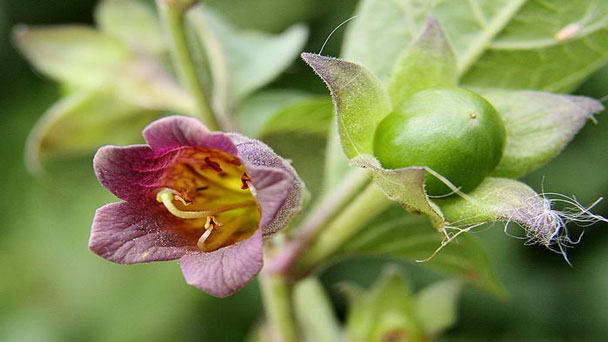
Latest Updated
- Benefits of Bugleweed - 7 Science-backed Health Benefits
- Bugleweed Dangers & Side Effects - Is It Poisonous?
- How to Plant Evergreen Trees - What You Should Know
- When to Plant Evergreens - Grow Guide for Evergreen Trees
- 12 Wonderful Evergreen Shrubs for Your Garden
- 12 Popular Evergreen Plants with Pictures for Beginners
- When And How To Prune A Lilac Bush Like a Pro
- How to Grow & Care for Lilac Vine (Hardenbergia Violacea)
- Japanese Lilac Tree (Syringa Reticulata) Care & Propagation Guide
- Shumard Oak Pros and Cons - What to Know
Popular Articles
- Winter maintenance of Antirrhinum Majus
- How to Grow Terminalia Mantaly Tree
- How to Grow and Care for Crossostephium Chinense
- How to grow Antirrhinum Majus in spring
- Peristeria Elata (Dove Orchid) Profile: Info & Care Guide
- Underwatered Snake Plant (Sansevieria Trifasciata) - Signs And How To Fix
- How to Care for Brazilian Jasmine Plant (Mandevilla Sanderi)
- How to Grow & Care for Graptopetalum Purple Delight in Summer
- Rosa Chinensis (China Rose): Plant Growing & Care Tips
- How to Care for Baby Sun Rose (Aptenia Cordifolia)